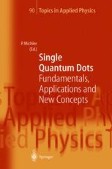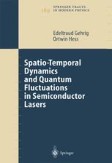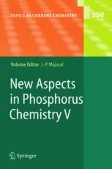Search
Search Results
-
Introduction to Femtosecond Technology
Femtosecond technology, with its ultrashort light pulses, is an innovative laser technology that can be used for multiple applications, e.g., in...
-
Characterization of Ultrashort Optical Pulses in the Few-Cycle Regime Using Spectral Phase Interferometry for Direct Electric-Field Reconstruction
Interferometry provides a very sensitive and accurate means to measure the phase of an optical field. It has been applied with great effect in the...
-
Subfemtosecond XUV Pulses: Attosecond Metrology and Spectroscopy
The generation of ever shorter pulses is a key to exploring the dynamic behavior of matter on ever shorter timescales. Recent developments have...
-
Silicon Fundamentals for Photonics Applications
The many and diverse approaches to materials science problems have greatly enhanced our ability to engineer the physical properties of...
-
Nonclassical Light from Single Semiconductor Quantum Dots
In this article the recent progress in the generation of nonclassical light using semiconductor quantum dots is reviewed. Photon antibunching and...
-
Monolithic Silicon Microphotonics
The technology evolution of optical interconnection is driven by the distance × product required for a given link. As such optical fiber deployment...
-
Anisotropic Substrates
A prerequisite for infrared ellipsometry investigations of semiconductor layer structures is an accurate knowledge of the substrate materials’...
-
The Active Carrier Plasma: Ultrafast Microscopic Dynamics and Spatio-Spectral Gratings
In this chapter we will analyze the dynamic physical processes in the active charge carrier plasma of a semiconductor laser. Calculation and...
-
4 × 4 Transfer Matrix T p for Dielectric Helical Films
Dielectric helical thin films (DHTF’s) are described by a homogeneous rotation of an arbitrarily oriented symmetric dielectric function tensor ɛ...
-
Polaritons in Semiconductor Layer Structures
The infrared optical response of layered structures composed of polar semiconductor materials is strongly influenced by resonant excitation of...
-
Infrared Model Dielectric Functions
This chapter reviews a selection of dielectric function models progressed for lineshape analysis of (far) infrared ellipsometry data. Contributions...
-
Zincblende-Structure Materials (III–V)
The following chapters will provide different examples including various semiconductor materials of contemporary interest and with diverse...
-
Ultrafast Scanning Tunneling Microscopy: Principles and Applications
The growing field of nanotechnology requires special tools capable of probing ultrafast surface dynamics on atomic scales in order to unveil...
-
Terahertz Radiation from Semiconductors
We provide a review of the different schemes for generating terahertz (THz) radiation using photoconductive emitters excited by femtosecond...
-
Spontaneous Emission from Semiconductors After Ultrafast Pulse Excitation: Theory and Simulation
In this chapter, we review the recent progress in the theoretical description of ultrafast phenomena in the spontaneous emission of pulse-excited...
-
The Rise of Organophosphorus Derivatives in π-Conjugated Materials Chemistry
This chapter concerns the synthesis and properties of π-conjugated oligomers and polymers containing phosphorus moieties, an area of increasing...
-
Two-Component Scenarios for Non-Conventional (Exotic) Superconductors
The possibility of superconductivity is analyzed within models where two components are present. Here both components may be non-superconducting on...
-
Artificial Host Molecules for the Sensing of Anions
The foundations of supramolecular complexation of anions by abiotic host compounds are evaluated, with the purpose of determining their qualitative...
-
Arylation Reactions via C-H Bond Cleavage
Various carbon nucleophiles having acidic C–H bonds, including active methylene compounds, ketones, aldehydes, esters, and so on, are arylated with...
-
New P-Chirogenic Phosphine Ligands and Their Use in Catalytic Asymmetric Reactions
This chapter is concerned with an update on the preparation and applications of optically active phosphine ligands which bear the chiral center at a...
